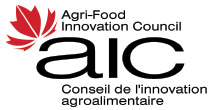Gender Equality Mainstreaming Digest – October 2018 Issue
Here are the highlights of this month’s Gender Equality Mainstreaming Digest! Click HERE for the full version.

Early autumn scene in Manitoba forest. Photo courtesy of D. Ceplis.
Highlights:
Opportunities and Upcoming Events:
Advancing Women Conference- East – OCTOBER 15 & 16 2018, Niagara Falls, Ontario, with optional wine tour on October 14.
Whether you are a student studying agriculture at a university or college, producer, rancher, entrepreneur, representative of a grower association or work in corporate agri-business. Network with women from across Canada and gain insight into how you can enhance your family life and your community, fast-track your career and positively impact the agriculture industry.
Can farming improve the lives of rural women and girls? – Streamed live online on 15 October, 15 October 2018 11:00 – 12:30 GMT+1 (BST). Register in advance.
Reducing gender inequality is one of the great challenges of the 21st century. Nowhere are concerns greater than where the disadvantages of being a woman intersect with the disadvantages of living in rural areas of developing countries. In rural areas, access to education and health services is often limited, and women are more likely to depend on farming for a livelihood. As a result, interest in women farmers has grown strongly in recent times. Studies proliferate on the conditions of women as farmers in the global South, as do debates on how best to rectify disadvantages and improve the conditions under which women farm.
While this is all encouraging, how important is farming to improving the lives of rural women and girls? Studies of changes to their lives in countries that have progressed from low- to middle-income status since the early 1960s suggest that some of the main drivers of improved lives lie outside of agriculture: in education, health, women-friendly family planning, and opportunities in the non-farm economy.
To mark International Day of Rural Women on 15 October, Overseas Development Institute ODI convenes an expert panel to explore this question further. The event includes discussion of new findings from recent research from ODI and the DFID-ESRC Growth Research Programme.
This Month’s News:
Africa Needs Strong Political Will to Transform Agriculture and Spur Economic Growth – According to the 2018 Africa Agriculture Status Report (AASR), Catalyzing State Capacity to Drive Agriculture Transformation, released this September by the Alliance for a Green Revolution in Africa (AGRA), African states need political will to boost production and income on the millions of small, family farms that grow most of Africa’s food.
The continent currently spends over USD 35 billion annually on food imports, money that could make a big difference if invested in agricultural development. AGRA has said Africa could require up to USD 400 billion over the next 10 years in public and private sector investments in food production, processing, marketing and transport.
Ethiopia is the only country in Africa that has achieved the highest agricultural growth rates over an extended period of time. In addition to Ethiopia, the report says Rwanda has marshalled political support for agriculture and integrated detailed action plans within its broader economic development strategies. Progress in the agricultural sector is credited with lifting over one million Rwandans out of extreme poverty in a relatively short period.
Furthermore, the report finds that economic output in Ghana’s agricultural sector—driven in part by the government’s new “Planting for Food and Jobs” programme—grew 8.4 percent in 2017 after posting only three percent growth in 2016. Similarly, AGRA experts point to countries such as Kenya, Burkina Faso, Mali and Zambia as places where political momentum and government capabilities are growing.
The increasing willingness of African governments to openly discuss where they are advancing in agriculture and where they are struggling is a reason for optimism, the report says. For example, 47 countries have signed on to the African Union’s Comprehensive Africa Agriculture Development Programme (CAADP), a master plan to achieve economic growth through growing agriculture by at least six percent annually.
In 2015, the CAADP plan identified the need to “Improve the productivity of agriculture to attain an average annual growth rate of 6 per cent, with particular attention to small-scale farmers, especially focusing on women.”
While Africa needs urgent agricultural transformation, it should attend to the challenges of rapid urbanisation, climate, significant unemployment (one third of Africans aged 15 to 35 are jobless), and chronic malnutrition, which has left 58 million children stunted.
Experts Call For Global Momentum on Gender Parity – The 73rd session of the U.N. General Assembly (UNGA) is being held in New York, United States, starting on Sept. 18th and running through to October. The meeting comes amidst heighten efforts by the U.N. towards gender parity among its staff across all levels of its employment structure as well as through its work. A number of U.N. entities are already showing impressive progress towards a more gender balanced workforce in the period spanning 2007 to 2017.
The Food and Agriculture Organization of the U.N. (FAO) has particularly been lauded for progress made towards gender parity within its workforce. Since the organisation’s director general Jose Graziano da Silva took office in 2011, it has not been business as usual as gender issues are taking centre stage. A U.N. system wide action plan on gender parity within this organisation indicates that: “As of the close of 2017, 41 percent of all international posts were held by women, the organisation’s highest representation of women in 10 years.” Moreover, when it comes to junior positions within the organisation, FAO has achieved gender parity.
Nonetheless, there are concerns that overall progress towards gender parity within FAO has been fairly slow. In the last decade, the representation of women has increased by only 12 percentage points.
Empowering Women – In promoting Gender Equality Week, IDRC provides an overview on how its work supports Gender Equality.
“What does empowering women look like?
It looks like high quality, demand-driven, policy-relevant knowledge, partnerships, and networks in the pursuit of effective, evidence-based action to reduce gender disparity, improve opportunities, and embrace women’s autonomy.
It looks like supporting evidence-based research that fosters effective and long-term action to reduce social inequality, foster greater gender parity, and build a safer world.
It looks like promoting agricultural innovations that improve women’s income and access to markets, promoting female entrepreneurship in technology-based interventions, and examining how care work and other domestic duties are valued and redistributed inside and outside the household.
These projects explore some of the many ways that IDRC-supported research is promoting gender equality and ultimately contributing to the SDGs. By sharing efforts to empower women, IDRC is contributing to a vital global conversation that will help make gender equality a reality worldwide.”
Reports Publications and Resources:
Ms. Scientist Documentary – This 44-minute documentary from CBC television looks at the challenges female scientists in British Columbia and Alberta face trying to break into and advance their careers and research.
